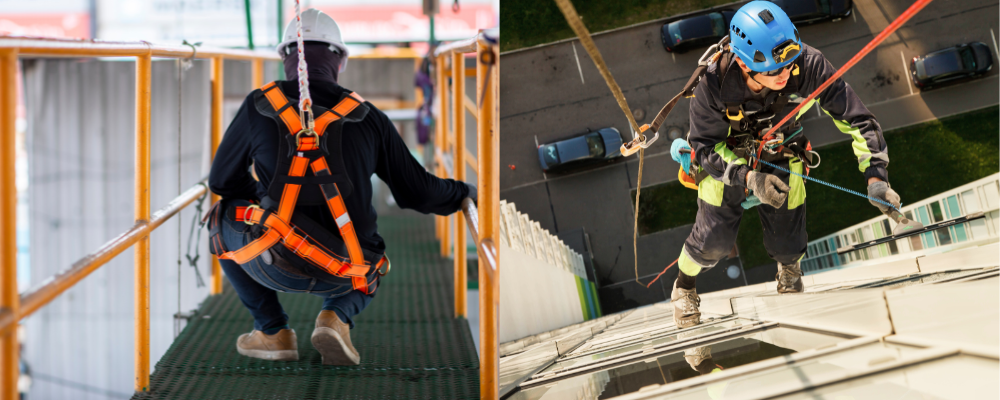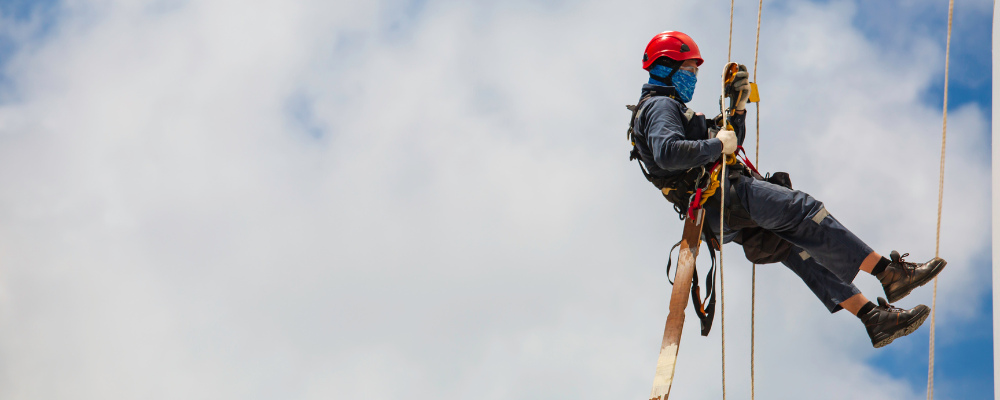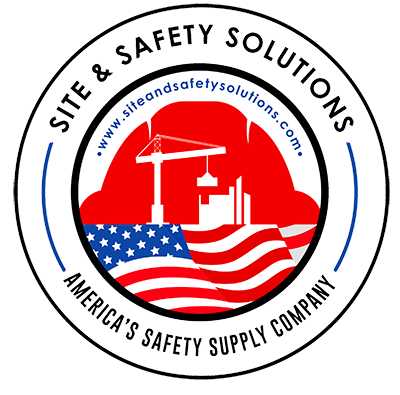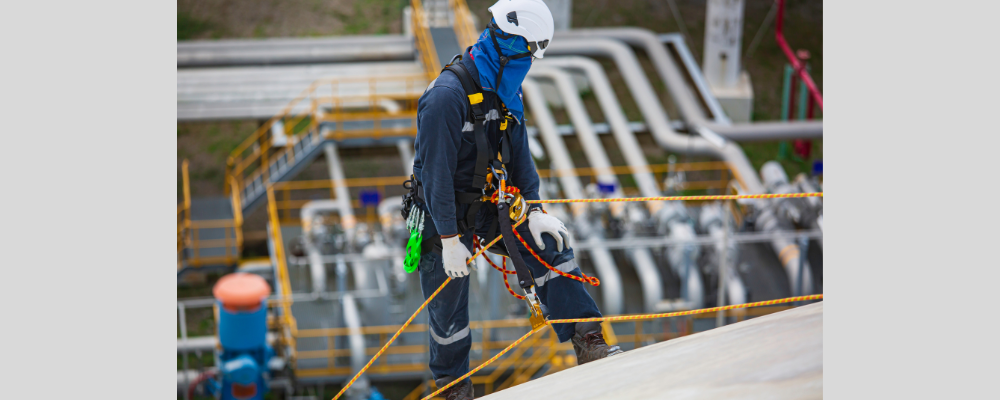Introduction
Working in construction demands robust safety measures, especially concerning fall protection. The risk of falls is omnipresent, necessitating reliable equipment and proper practices. This blog delves into essential fall protection gear crucial for every construction worker.
Understanding the Importance of Fall Protection
-
Risks Associated with Working at Heights
Construction sites are inherently risky environments, particularly concerning tasks performed at elevated positions. Falls constitute a significant portion of injuries and fatalities in the construction industry. The hazards include:
- Gravity-Related Accidents: Working at heights exposes individuals to the risk of falling, leading to severe injuries or fatalities.
- Unstable Surfaces: The unpredictability of surfaces, like scaffolding, ladders, or rooftops, increases the chances of slipping or tripping.
- Objects in Motion: Tools, materials, or machinery moved at heights pose a threat of falling and causing injury.
Understanding these risks underscores the critical importance of implementing robust fall protection measures.
-
Regulatory Standards for Fall Protection
Government bodies enforce stringent safety regulations to mitigate fall-related risks at construction sites. Compliance with these standards is pivotal for ensuring worker safety and avoiding legal repercussions. Key regulations encompass:
- OSHA Standards: The Occupational Safety and Health Administration (OSHA) outlines comprehensive guidelines for fall protection. These encompass standards for equipment, training, and safety protocols.
- ANSI Standards: The American National Standards Institute sets norms for fall protection equipment, ensuring their reliability and effectiveness.
- Local Building Codes: Municipalities and authorities often impose specific guidelines tailored to regional construction requirements.
Comprehending and adhering to these regulations ensures a safe work environment and prevents fall-related incidents.
Best Practices for Fall Protection
-
Proper Equipment Inspection and Maintenance
Regular and meticulous inspection of fall protection gear is non-negotiable. It ensures that the equipment functions optimally and reliably during use. Key practices include:
- Scheduled Inspections: Implementing a routine inspection schedule to assess equipment for wear, tear, or damage.
- Prompt Maintenance: Addressing any identified issues promptly to maintain the integrity and functionality of the gear.
- Record-Keeping: Maintaining detailed inspections, repairs, and replacement records to ensure accountability and traceability.
A well-maintained inventory of fall protection gear is vital for mitigating risks and ensuring worker safety.
-
Comprehensive Training and Education
Proper training plays a pivotal role in reducing fall-related incidents. Educating workers on using fall protection equipment and safety protocols significantly minimizes risks. Key aspects of this training include:
- Equipment Familiarization: Thorough instruction on how to wear, adjust, and utilize fall protection gear effectively.
- Safety Procedures: Detailed guidance on protocols to follow when working at heights, emphasizing precautions and emergency response.
- Regular Refreshers: Ongoing training sessions to reinforce knowledge, address new safety concerns, and update workers on any equipment changes or advancements.
Empowering workers with the knowledge and skills necessary to navigate height-related tasks safely is crucial in preventing falls and ensuring a secure work environment.

Essential Fall Protection Equipment
-
3-Strand Poly Dacron Combo Rope Fall Protection
This durable rope provides reliable support, ensuring secure anchorage while working at elevated positions.
-
Anchor Cable Cross Arm – 6 FT
A crucial component for establishing secure anchor points, ensuring stability and safety for workers.
-
Full Body Harness Variants
Options like the Universal, 1D, MB Chest, FD, and TB Legs harnesses offer comprehensive body support, reducing the impact of falls and injuries.
-
Honeywell Miller® TurboLite™ Flash Personal Fall Limiter
This innovative limiter minimizes free fall distances, offering a rapid response in case of a fall.
-
Steel Plate Flange Anchor
A reusable, durable anchor with substantial weight capacity, ensuring a firm grip for workers at heights.
Best Practices for Fall Protection
Proper Equipment Inspection and Maintenance
In fall protection, consistent and meticulous equipment inspection and maintenance are the cornerstone for ensuring utmost safety and reliability in construction settings. Here’s a detailed breakdown of the importance and steps involved in proper equipment inspection and maintenance:
Regular Inspections: A Preventive Measure
Regular fall protection equipment inspections, including harnesses, ropes, anchors, and limiters, are critical. These inspections should adhere to manufacturer guidelines and regulatory standards. Scheduled checks, ideally performed before each use, detect potential issues or wear-and-tear, preventing accidents due to faulty gear.
Inspection Procedures
- Visual Examination: Inspect for visible damages such as cuts, fraying, or corrosion. This includes checking the stitching, webbing, and metal components for signs of wear or damage.
- Functional Testing: Verify the functionality of the equipment. For instance, check buckles and connectors for proper locking mechanisms and assess the elasticity and strength of ropes or lanyards.
- Documentation: Maintain comprehensive records of inspections, repairs, and replacements. This documentation helps track the equipment’s history, aiding in decision-making regarding replacements or repairs.
Maintenance Protocols
- Cleaning: Properly clean the equipment after use to remove dirt, debris, or contaminants that might compromise its integrity. Follow manufacturer guidelines for cleaning methods.
- Storage: Store equipment in designated areas, away from direct sunlight, moisture, or extreme temperatures. Proper storage prevents degradation and extends the lifespan of the gear.
- Repairs and Replacements: Promptly address any identified issues or damages. Always use authorized parts and follow manufacturer instructions for repairs. Equipment that is deemed unsafe or beyond repair should be replaced immediately.
Comprehensive Training and Education
The Role of Training in Fall Protection
Comprehensive training and education form the backbone of a robust fall protection program. Properly trained personnel have the knowledge and skills to use fall protection equipment effectively and navigate potential hazards. Here’s a comprehensive look at the significance of training and its impact on reducing fall risks:
Importance of Training
- Equipment Familiarization: Training programs ensure that workers understand the functionality of various fall protection gear, including harnesses, lanyards, anchors, and limiters.
- Safety Protocols: Educate workers on safety protocols, including proper anchorage, correct fitting of harnesses, and techniques for working at heights.
- Emergency Procedures: Train workers in emergency response procedures in case of a fall, emphasizing prompt action and correct usage of safety equipment like personal fall limiters.
Ongoing Education
- Regular Refresher Courses: Continuous education through periodic refresher courses reinforces knowledge and keeps workers updated on the latest safety standards and equipment advancements.
- Supervision and Mentoring: Encourage a culture of mentorship and supervision, where experienced workers guide newcomers, ensuring adherence to safety practices.
By prioritizing comprehensive training and consistent education, construction workers are empowered with the necessary skills and knowledge to navigate fall hazards effectively, significantly reducing the risks associated with working at heights.

Fall Protection Equipment Selection Guide
-
Factors influencing fall protection equipment choice
- Site-specific requirements: Considerations based on the nature of the construction work, heights, and surroundings.
- Compatibility: Ensuring equipment compatibility with existing safety measures and regulations.
- Worker comfort and mobility: Equipment should facilitate movement while ensuring optimal safety.
-
Comparison of different fall protection gear types
- Harnesses vs. belts: Understanding the advantages and limitations of each for various job requirements.
- Types of anchors: Exploring the suitability of different anchor systems based on construction site specifics.
-
Importance of proper sizing and fitting
- Ensuring proper sizing of harnesses and gear for individual workers to maximize safety and effectiveness.
This section focuses on aiding construction workers in selecting the most suitable fall protection equipment. It outlines key factors influencing equipment choice, emphasizing site-specific considerations, compatibility, and worker comfort. The comparison of different gear types provides a comprehensive understanding of their functionalities, helping workers make informed decisions. Moreover, the significance of proper sizing and fitting emphasizes the need for individualized gear to optimize safety measures.
Maintenance and Inspection Protocols for Fall Protection Gear
-
Regular inspection guidelines
- Visual checks: Identifying visible signs of wear, tear, or damage on equipment.
- Functional tests: Verifying operational functionality, including lanyards, harnesses, and anchors.
-
Maintenance practices for prolonged gear durability
- Cleaning instructions: Proper cleaning techniques to maintain equipment integrity.
- Storage recommendations: Storing gear in appropriate conditions to prevent damage and degradation.
-
Compliance with regulatory standards
- Adherence to manufacturer recommendations and industry standards for inspections and maintenance.
This segment underscores the significance of regular maintenance and inspection routines for fall protection gear. It outlines detailed inspection guidelines, highlighting visual checks and functional tests to ensure equipment integrity. Additionally, it emphasizes proper maintenance practices such as cleaning techniques and storage recommendations, contributing to the gear’s longevity. Moreover, the section stresses compliance with regulatory standards, emphasizing the importance of following manufacturer and industry standards for inspections and maintenance.
Advanced Fall Protection Techniques and Innovations
-
Emerging technologies in fall protection
- IoT-enabled safety gear: Integration of IoT for real-time monitoring and alerts.
- Advanced materials: Utilization of innovative materials for lighter yet durable equipment.
-
Heightened safety measures
- Fall arrest systems: Detailed explanation of modern techniques designed to arrest falls more effectively.
- Rescue and retrieval advancements: Innovations aiding in efficient rescue operations in case of a fall.
-
Training on advanced techniques
- Specialized training programs: Access specialized courses for effectively utilizing advanced fall protection methods.
3-STRAND POLY DACRON COMBO ROPE FALL PROTECTION
Full Body Harness: Universal, 1D, MB Chest, FD, TB Legs
Honeywell Miller® TurboLite™ Flash Personal Fall Limiter
Steel Plate Flange Anchor,Reusable: 310 lb Wt Capacity, Fixed D-Ring, Vertical, Steel, 3M DBI-SALA
For more information, visit our website and Facebook page.
Conclusion
Fall protection remains a cornerstone of construction site safety. Equipping workers with reliable gear and ensuring adherence to safety protocols is imperative for minimizing risks and safeguarding lives. This section delves into the latest advancements in fall protection, highlighting emerging technologies and materials enhancing safety measures. It discusses IoT integration, advanced materials, and their impact on improving equipment functionality. Explaining modern fall arrest systems and rescue innovations underscores the ongoing developments in ensuring worker safety. Furthermore, the emphasis on specialized training programs stresses the importance of effectively training workers to utilize these advanced fall protection techniques.










